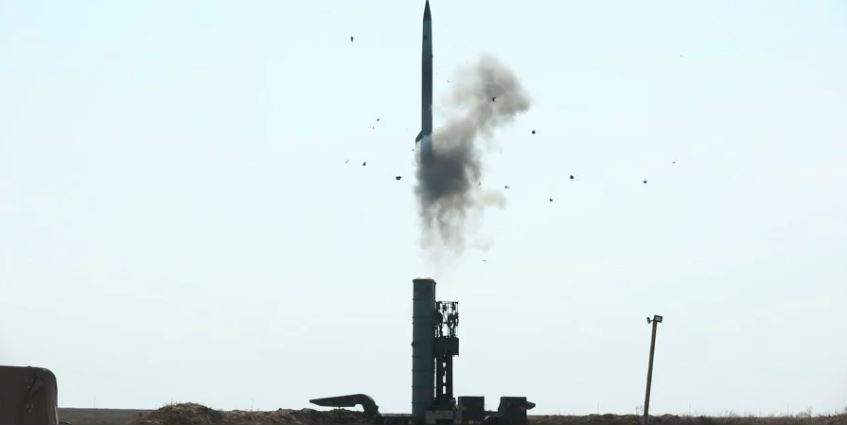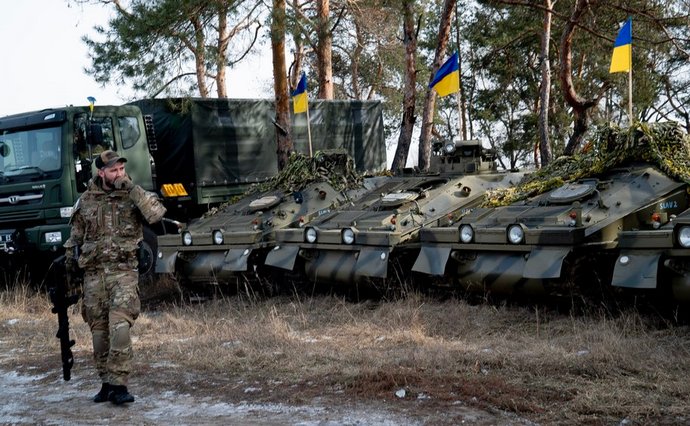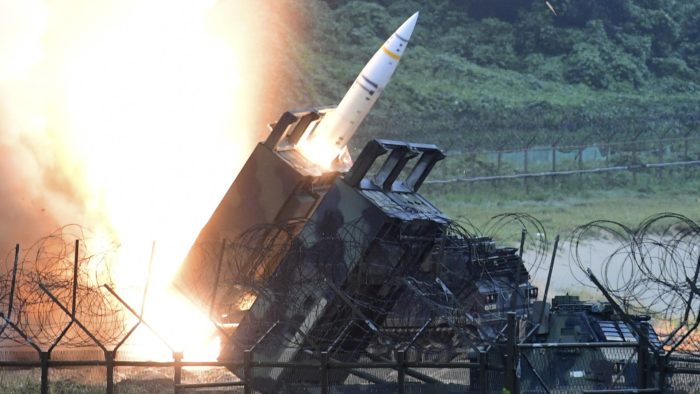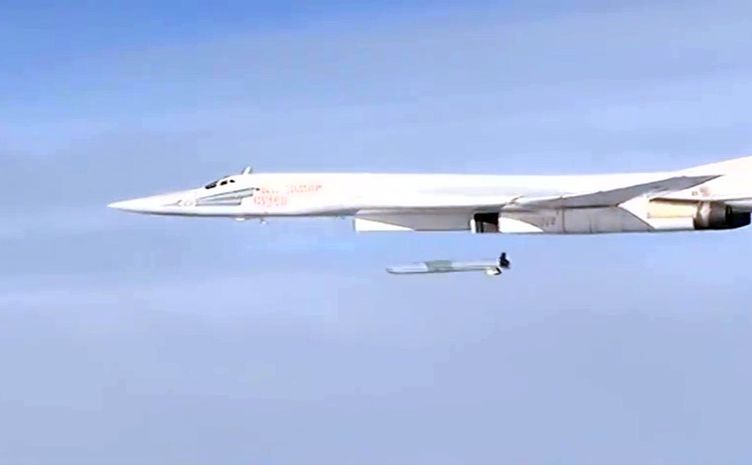How to shoot down a $2 million Russian missile with only 50 rounds of ammunition costing UAH150 each ($4); a master class from Odesa air defense unit members who worked at the plant and locomotive depot only a few months ago.
The Hromadske team spent a fair amount of time in the car winding through the high, frost-covered hills. The crew drove from the Berezivka district center, Odesa Oblast, to one of the air defense forces' positions of the Odesa brigade of the Territorial Defense Forces of the Ukrainian Armed Forces (AFU). As the Hromadske team approached a military camouflaged dugout perched atop a hill, the group exited the vehicle following Captain Dmytro Hobzhelian. Two men approached Hromadske's team in worn but clean uniforms.
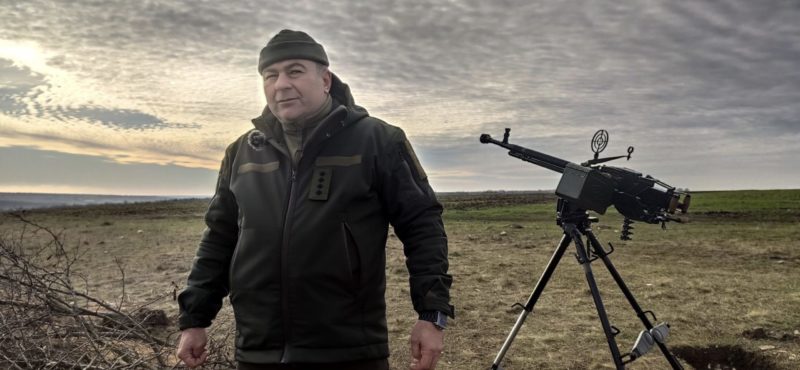
Captain Hobzhelian introduces the Hromadske crew to "Hora" (Ukr. mountain) and "Chief" saying, "These are the same guys."
The same unit used several rounds of heavy machine gun fire to shoot down a northbound Russian missile on 23 November 2022. It only required 50 rounds of ammunition worth UAH 150 each to hit the target. Thus, neutralizing a costly missile that would have resulted in casualties and millions of dollars in damage cost Ukrainian taxpayers about $200.
It was not the first time these men had spoken with journalists.
The "Chief" recounts their success story as if reading apolice report from memory, "Around one o'clock on 23 November, we made visual contact with an air target moving from south to north at an altitude of approximately one kilometer and a distance of 1200 to 1500 meters from our position."
At this moment, "Hora's" phone starts to ring; he smiles remorsefully and reaches into his pocket to silence the buzzer. The "Chief" gets disappointed that he must retell the entire story from the beginning. He begins to speak before falling silent in confusion. The men still struggle to talk on camera. It is the first time anyone has ever thought to interview them, even though they have been around for over four decades.
"Hora," aka Oleksandr Zahorodnyy, has worked his entire life as a welder. "Chief," aka Volodymyr Rasnyuk, was a railroad engineer. They voluntarily enlisted in the Territorial Defence Forces of the Armed Forces of Ukraine (AFU) to protect their families.
Strong forty-year-old "Hora" is childishly afraid of the camera.
As soon as he faces the camera, he begins to stutter and stops talking after only having just introduced himself, "I forgot what's next," he says with a smile.
Everyone laughs.
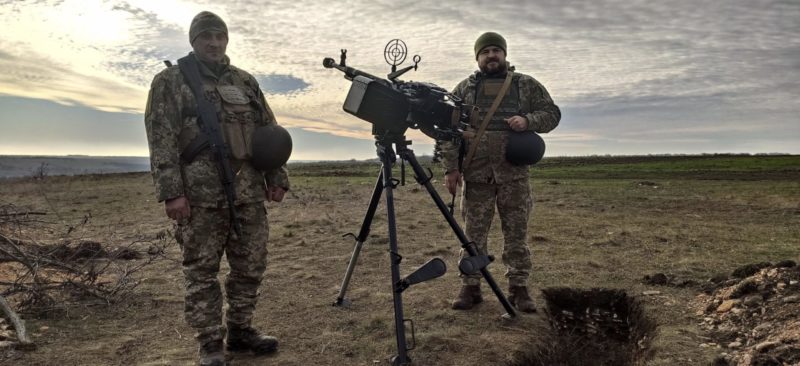
The air defense position is a small platform adjacent to the dugout with a 360-degree view. A tripod-mounted large caliber DShK (Rus. Degtyarov Shpagin Krupnokalibernyi or "Degtyaryov-Shpagin large-caliber") machine gun is standing here. Behind it, a shallow, semicircular trench, allowing the fire to be directed almost vertically upwards if necessary. The men are standing on either side of the machine gun, which has replaced the welding machine and train engine control levers as their primary tool.
-"It's good thing machine gun was deployed and loaded," continues "Chief". The conversation now flows more easily in a low-key setting. "It's fortunate that the missile was spotted in an area where it was permitted to fire."
- "Is it not permitted to shoot in all directions?" Hromadske's team clarifies.
- "Of course. We don't fire in directions where bullets or shrapnel could endanger nearby residents."
- "I pointed the machine gun," "Hora" demonstrates how the DShK is brought into firing position, "'Chief' took aim and fired."
- "I fiered in bursts," says "Chief", "and I almost finished the entire round. We saw an explosion in the air and rocket fragments falling onto a nearby hilltop field. Approximately two kilometers away."
The men have only been working with the DShK for two months. Before joining the Territorial Defense Forces, none had any military experience. However, they claim it was simple to master the machine gun. "Hora" assures that operating a machine gun is no more complicated than using a welding machine. Before destiny brought him to the railroad, "Chief" dreamt of joining the military. Additionally, he has extensive hunting experience.
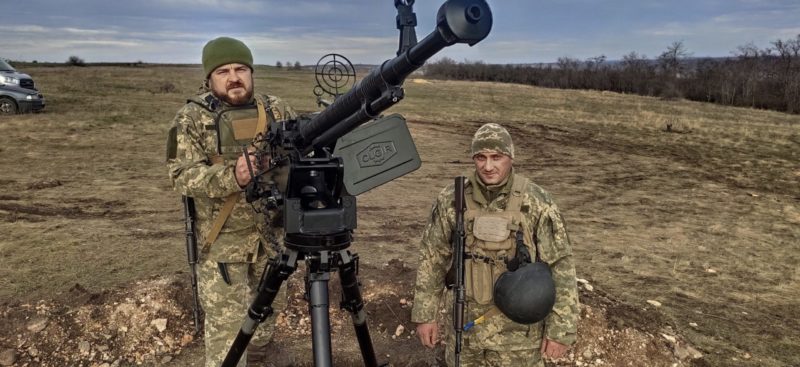
"I have been hunting with my father since I was five years old. I have been around firearms since childhood. And downing Russian missiles is comparable to pheasant or duck hunting," jokes "Chief."
At all times, a mobile unit of six soldiers is constantly on duty at this location. They live on a nearby farm and conduct combat shifts in pairs. The Ukrainian sky currently requires special attention.
"First and foremost, we felt satisfaction," replies "Hora" when asked about their emotions after hitting the target. "For so long, we hadn't seen anything during shifts. The moment we spotted it, we immediately shot it down. We felt a sense of pride after downing it. "
Later, the Commander of the Territorial Defense Forces, Major General Tantsyura, personally presented the men with awards during a unit visit. They say it was very pleasant. It is "Hora's" second military award. The first award, "Hora," had received on Ukraine's Territorial Defense Day as the unit's best fighter.
"Together with our commander, Lieutenant-Colonel Artem Kukhar, and platoon commanders, I was conducting reconnaissance on the ground that day," recalls Captain Hobzhelian, the company commander. "We were searching for additional locations to set up mobile fire teams. We determined the sectors of fire. We arrived at the position to check on the fighters."
After receiving the "missile alert" command, they began closely monitoring the airspace. One of the platoon commanders was the first to spot the missile. He moved a few kilometers forward and radioed information about the target. The commander prepared for combat duty. The commander ordered to open fire as soon as the missile entered their view.
According to the Captain Hobzhelian, subordinates worked in a clear and coordinated manner "Just as I trained them on the drills, they anticipated the missile's movement and got ahead it, hit with precision, and downed it."
The captain then proceeded to the crash site, cordoned off the scene, and waited for the police to remove the missile debris. Local villagers had already assembled close to the wreckage before they arrived. They were overjoyed and grateful and offered their help.
"First of all, I felt proud of my subordinates," says Dmytro Hobzhelian, "It turns out that I have not been training them in vain, making them study, and I will continue training. It was worth the effort. I was also proud of our country because we can defend ourselves and will not cede our territory."
Hobzhelian is a career officer. He served in the 79th Air Assault Brigade for many years. But, in 2009, he retired and began working for a car company. However, after 24 February 2022, he immediately returned to service. Currently, he commands a fire support company within one of Odesa's battalions of the Territorial Defense Forces.
"The majority of my men are volunteers," explains Captain Hobzhelian. "Obviously, the majority of them are not military personnel, as they came from civil professions. However, they're volunteers. They are motivated and inspired, and everything works out well."
He is confident that the unit would have performed equally well if he had not been in this position at the time.
"They are independent. Without a doubt, they would have managed," says Hobzhelian.
According to the company commander at the beginning of the war, it was more difficult for Territorial Defense Forces to engage air targets. There were instances in which they spotted a Russian missile or drone and had the opportunity to engage it. However, they lacked time to obtain permission from the command to open fire. Work has become more straightforward since the Commander-in-Chief authorized firing at visible targets without reporting to the command. In addition to large-caliber machine guns, the Territorial Defense Forces' air defense is equipped with anti-aircraft guns and portable anti-aircraft missile systems. According to Dmytro Hobzhelian, downing a missile is easier than many believe.
Accroding to him "It is not moving at the speed of light. It's not faster than a plane. It is also feasible to hit it with a machine gun, which has a maximum range of 3,800 meters. It's a good machine, and it fires accurately."
"The most important is confidence, a cool head, and precise shooting," "Chief" shares their secret to success. And he adds with a smile, "Well, perhaps a bit more luck."
After the war, the men intend to return to the factory and depot. However, they will remain in the Territorial Defense Forces reserve.
"It is every man's duty," explains "Chief", "if we've come here at this time, we must remain in reserve."
Read more:
- Missile attacks reported in half of Ukraine oblasts, air defense shot down dozens of missiles
- South Ukraine remains a delicacy for Russia – defense spox Humeniuk
- Slovakia to send air defense system Patriot to Ukraine – Corriere della Sera
- US, Germany to supply IFVs to Ukraine; Germany to give Patriot SAM – Biden after call with Scholz
- SAM system Patriot to be deployed in Ukraine “as soon as possible” – Ukraine MFA
- Ukraine's air defense downed 25 out of 38 Russian missiles during massive attack
- The Netherlands to send Patriot missile defense system to Ukraine along with the US and Germany
- Ukraine's air defense improved fourfold since start of Russian invasion
- Memorial sign to the Territorial Defense Forces unveiled in Irpin, Kyiv Oblast
- Created in three days, Ukraine's territorial defense ruined Russian plans to capture Kyiv
- "My name was on Russia's kill lists," Mariupol journalist who joined territorial defense says


